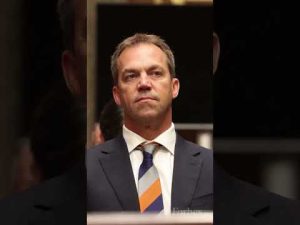In a dramatic courtroom scene worthy of a Hollywood thriller, the unexpected unfolded in Boise, Idaho’s courthouse. Families, seeking justice for their loved ones, found themselves caught in a whirlwind of emotions and legal jargon. This was a case involving Bryan Kohberger, where a plea deal was struck, leaving some feeling blindsided. Maddy Mogen’s family agreed to the plea deal, while Kaylee Goncalves’ family wanted a public jury trial, inciting a classic courtroom drama plot twist.
Now, let’s talk about the element of surprise. Even the judge seemed taken aback, almost as if he got caught off guard during his afternoon snack. How does an arrangement of this magnitude slip past a judge’s radar? It seems to have unfolded with all the stealth of a high-stakes poker game—no one saw it coming. The prosecutor, eager to avoid future appeals, saw this plea deal as the best possible resolution. For families seeking the emotional catharsis that comes with a guilty verdict handed down by a jury, this decision felt more like a backroom deal than justice served.
The heartache of the families involved is undeniable. Victims’ families naturally want to see the maximum penalty imposed on those who have wronged them. When authorities step in, explaining that a plea agreement is in everyone’s best interest, these discussions can be as welcome as a rainstorm during a picnic. It’s a hard pill to swallow, but for the government and their prosecutorial team, this deal eliminates the gamble of a deadlocked jury or, heaven forbid, an acquittal.
Interestingly, this plea deal decision seemed to have been orchestrated without fully consulting the families involved. Imagine receiving a crucial email just moments before the headlines hit the airwaves! It’s like getting invited to a dinner party long after dessert has been served. This situation has left some family members more than a little annoyed. They argue that their input should have been vital in the negotiation process. If indeed they were left in the dark, it’s more than a simple oversight—it’s a glaring lapse that undermines their role.
Regarding the evidence stacked against Kohberger, it reads like every crime show’s best episode—a knife found at the crime scene, cell phone tracking movements suspiciously close to the incident, and eyewitness descriptions straight from the roommates. Some wonder if the case against Kohberger was strong enough to stand trial. Prosecutors seemed confident, laying out their narrative like a grand opening statement that would have met the “beyond a reasonable doubt” threshold. Yet, the unpredictability of a jury trial loomed large—who knows how jurors might interpret the events? In any outcome, one thing remains unchanged: the raw emotions of those seeking justice for injustice done to their family hearts.







